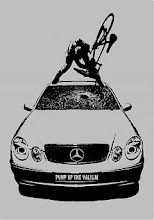The towers are part of Project 28, which plans for 9 towers to be deployed along the border between the Tohono O'odham reservation, Sasabe, and Arivaca.
Though the towers are currently 'non-permanent' and are being tested, the Environmental Impact Assessment report, states that:
"Project 28 towers and associated equipment will be moved to new locations in or out of the Project 28 area based on CPB decisions that are driven by feedback of tower performance and the desire to increase system performance...After Project 28 is complete, it is likely that the mobile towers will be replaced with permanent towers, however, the locations of the permanent towers are currently unknown and will be based on system performance"

The towers have created plenty of controversy in the town of Arivaca (and elsewhere, such as on the Tohono O'odham reservation). Though locals are perhaps concerned about the towers for reasons other than the low-intensity warfare upon those crossing undocumented in the deserts nearby, it is hoped that their resistance to the towers, based largely on concerns of privacy and environmental impact will be enough to stop the towers being erected. This is combined with community pressure to have the permanent internal border checkpoint placed on the I-19 near Tubac stopped
Combined with the already proven inefficiency of the towers, the technology put into the towers by Boeing and another group from Israel involved in 'securing' the new wall of death there, seems virtually useless, given the mountainous terrain surrounding the tower. It comes equipped with surveillance cameras and 4 ground sensors buried around it to reduce chance of damage to the tower.



Environmental concerns have centered largely around the fact that the area is a popular corridor for migrating birds, and that the large flashing red light on top will disorient them. The CBP answer? A large air-horn that will be sounded when the camera operator (located many miles away in Tucson or on O'odham land) sees a bird approaching...
The CBP also suggests that the fragile environment in the region, including the Buenos Aires wildlife refuge, will benefit from increased border patrol, as it will reduce the numbers of people crossing by foot in the area
Along with all of this, my time in Arivaca has led me to become almost used to the police-state that is situated there. On top of the local sherrifs constantly deployed along Arivaca road and Highway 286, the Border Patrol is a constant presence. Whilst driving along the 286 for less than 20 miles, over 40 B.P. vans, cars, trucks, and ATV's were spotted. Few bother to leave their cars to enter into the desert, but instead wait at the roads. Along with this are the Wackenhut buses, located at various points on the highways waiting for BP agents to hand over detained persons to be transported to processing centers and deported into Mexico, or flown further south to their home towns, or to other countries in Central America through the 'Repatriation' program


Meanwhile, you can constantly hear fighter jets flying high over head, deployed from the nearby military bases that dot the landscape throughout Arizona. Every way you turn its one form of enforcement or another, with local and global ramifications.

No comments:
Post a Comment